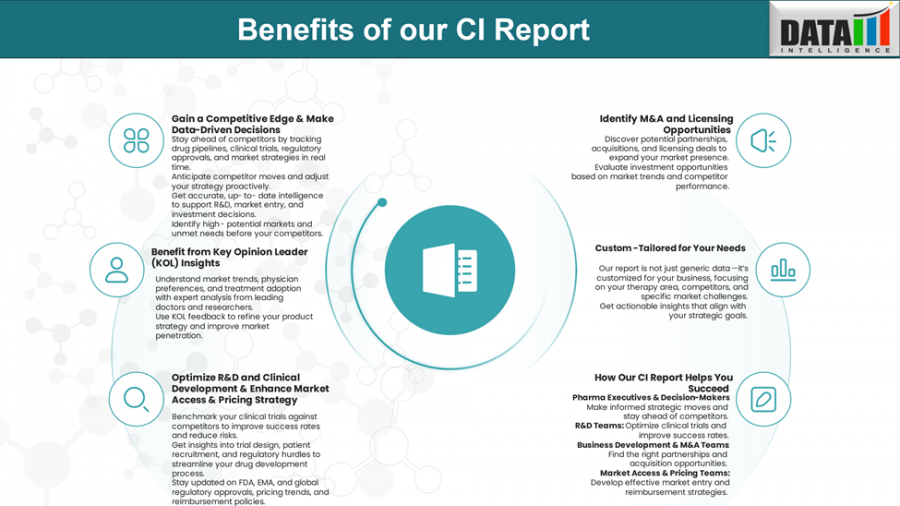
Neurofibromatosis Type 1 (NF1) Drug Development Gains Momentum Amid Growing Need for Safer, More Effective Therapies
NF1 drug development accelerates with novel treatments aiming to surpass current MEK inhibitors in efficacy, safety, and patient-friendly delivery.
AUSTIN, TX, UNITED STATES, June 3, 2025 /EINPresswire.com/ -- In the realm of rare genetic disorders, Neurofibromatosis Type 1 continues to pose significant clinical challenges, but promising developments in therapeutic research signal a turning point for affected individuals worldwide.
Neurofibromatosis Type 1 (NF1) is a complex, hereditary disorder affecting approximately 1 in every 3,000 people globally. This autosomal dominant condition, characterized by the formation of benign and malignant tumors along nerves, leads to a spectrum of physical, neurological, and cosmetic complications. The disease presents early in life, with symptoms ranging from café-au-lait spots and freckling to plexiform and cutaneous neurofibromas—tumors that can be disfiguring and sometimes life-threatening.
Download Free CI Sample Report: https://www.datamintelligence.com/strategic-insights/sample/neurofibromatosis-type-1-nf1
The burden of NF1 transcends borders and age groups. While incidence rates are consistent across ethnicities, the condition appears more prominently in pediatric populations. This is likely due to a combination of earlier onset and the severe manifestations that can impact life expectancy if not managed effectively. Given its progressive nature and the limitations of past treatments, NF1 represents a high-unmet-need segment in rare disease therapeutics.
In recent years, significant strides have been made in targeting NF1, particularly with the U.S. FDA’s approval of two breakthrough treatments: Koselugo (selumetinib) by AstraZeneca/Merck and GOMEKLI (mirdametinib) by SpringWorks Therapeutics. Koselugo, approved in 2020, marked the first therapeutic option for pediatric patients with inoperable plexiform neurofibromas. GOMEKLI followed with broader approval, extending to both children and adults—thus expanding the treatable population.
Despite these advances, the treatment landscape remains far from saturated. Many patients still face unmet needs, especially those suffering from cutaneous neurofibromas or who are intolerant to current MEK inhibitors due to gastrointestinal or skin-related side effects. To address this gap, biopharmaceutical companies are pushing a diverse pipeline of novel agents, many of which are currently in mid-to-late stage development.
Leading candidates include Luvometinib (Fosun Pharma), expected to secure Chinese market approval in 2025, and Tunlametinib (Kechow), a Phase II contender focusing on broader NF1 applications in Asia-Pacific regions. Notably, these therapies continue to exploit the Ras/MAPK pathway via MEK1/2 inhibition—a mechanism central to NF1 pathogenesis.
However, innovation is also emerging from companies exploring non-traditional approaches. NFX-179 by NFlection Therapeutics is a topical MEK inhibitor designed specifically for cutaneous neurofibromas, offering a non-invasive, localized option that could improve patient adherence and quality of life. Meanwhile, HLX-1502 (Healx) is advancing a new frontier by targeting mitochondrial dysfunction, positioning itself as a potential MEK-independent alternative.
According to competitive intelligence benchmarks, efficacy remains the gold standard in evaluating pipeline success. A “best-in-class” candidate would need to demonstrate at least a 50% objective tumor response rate (ORR) and durability of response exceeding 12 months for the majority of responders. While GOMEKLI showed ORRs in the 42–52% range, any future product that exceeds this threshold with better tolerability could quickly dominate market share.
Safety and tolerability are paramount in pediatric use. Dose-limiting toxicities, particularly gastrointestinal side effects and dermatologic reactions, are common culprits that force treatment interruptions or discontinuation in current MEK-based therapies. Emerging therapies with a cleaner safety profile—possibly those that bypass the MEK pathway or are used in combination to minimize dosage—are seen as the next wave of innovation.
Another strategic lever for market differentiation is route of administration. Both Koselugo and GOMEKLI are oral medications, but advancements in topical and long-acting injectable forms are gaining momentum. Topical formulations, like NFX-179, are particularly attractive for their ability to localize treatment, reduce systemic exposure, and cater to patients with milder forms of NF1, such as those with only cutaneous neurofibromas.
Beyond efficacy and safety, convenience and formulation play crucial roles, especially for pediatric populations. Child-friendly dosage forms—like liquids or dissolvable tablets—can dramatically improve compliance. Similarly, therapies that demonstrate rapid onset (within 2–3 months) rather than the 4–6 month timeline seen with existing drugs would be well-positioned in a market that increasingly values fast, meaningful outcomes.
Book Your Free Consultation Call: https://www.datamintelligence.com/strategic-insights/neurofibromatosis-type-1-nf1
Another frontier gaining traction is the integration of biomarkers and precision medicine. Research is underway to identify genetic or proteomic indicators that can predict treatment response, enabling a more tailored approach to NF1 management. This could help limit unnecessary exposure and optimize therapeutic windows for each patient.
From a global perspective, companies like Fosun and Kechow are setting the stage for expansion in high-population countries such as China, where regulatory approvals and cost-effective distribution could drastically widen access. In contrast, Western biotech firms continue to refine their focus on differentiated mechanisms of action and broader age indications to stay competitive.
Looking ahead, the Target Opportunity Profile (TOP) for NF1 treatments is well-defined. Successful candidates must achieve superior efficacy, minimize toxicity, and offer patient-centric design in both formulation and administration. As more companies race toward these benchmarks, strategic differentiation will be essential to capture share in this evolving landscape.
The path forward for NF1 is promising. With deeper insights into its molecular underpinnings, broader clinical development pipelines, and the emergence of truly innovative modalities, the rare disease community is entering a new era—one defined not by symptom management, but by meaningful therapeutic breakthroughs.
Read More Our CI Reports:
1. Achondroplasia | Competitive Intelligence Report
2. Thyroid Eye Disease | Competitive Intelligence Report
Sai Kumar
DataM Intelligence 4market Research LLP
+1 877-441-4866
email us here
Visit us on social media:
LinkedIn
X
Distribution channels: Healthcare & Pharmaceuticals Industry
Legal Disclaimer:
EIN Presswire provides this news content "as is" without warranty of any kind. We do not accept any responsibility or liability for the accuracy, content, images, videos, licenses, completeness, legality, or reliability of the information contained in this article. If you have any complaints or copyright issues related to this article, kindly contact the author above.
Submit your press release
